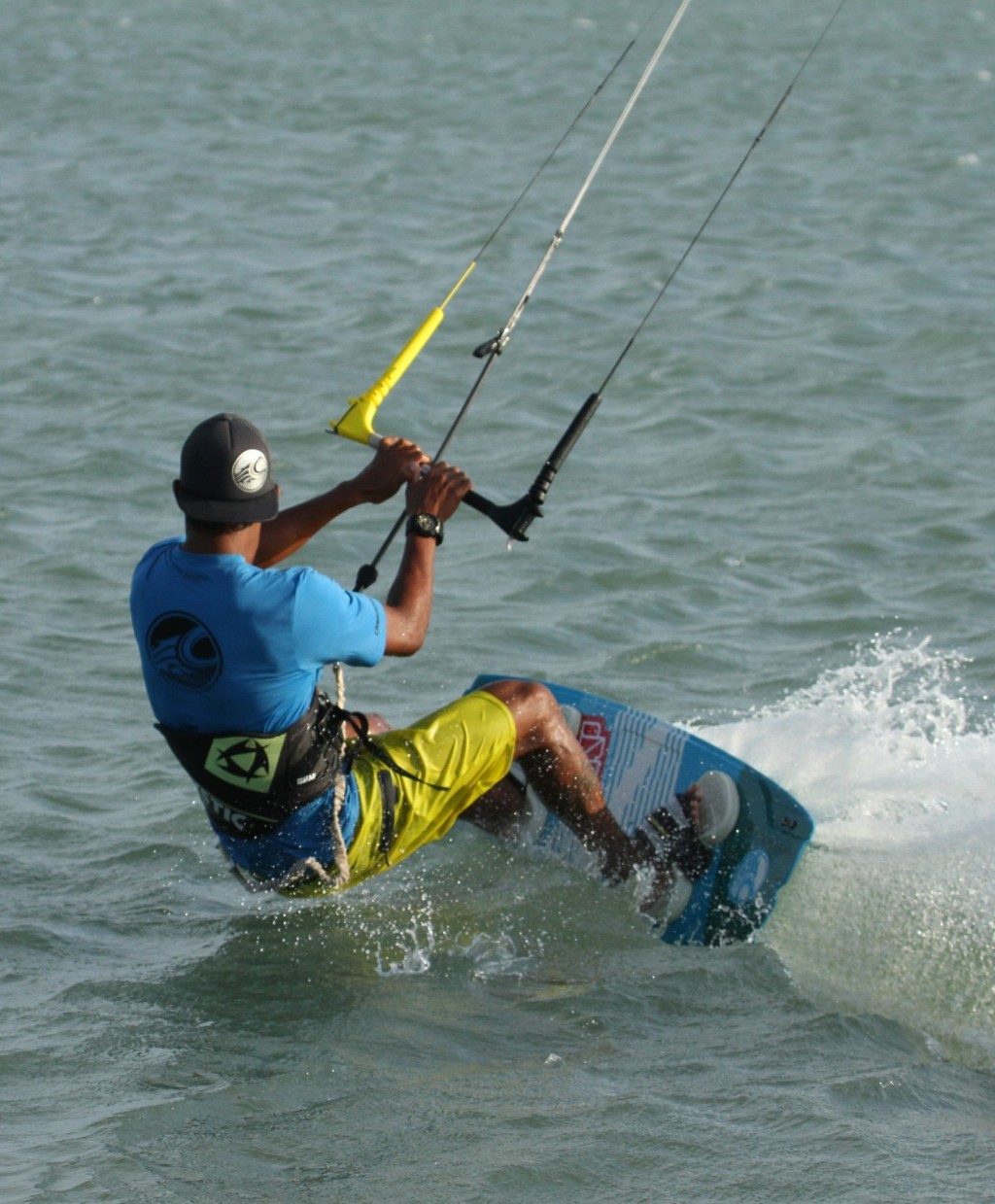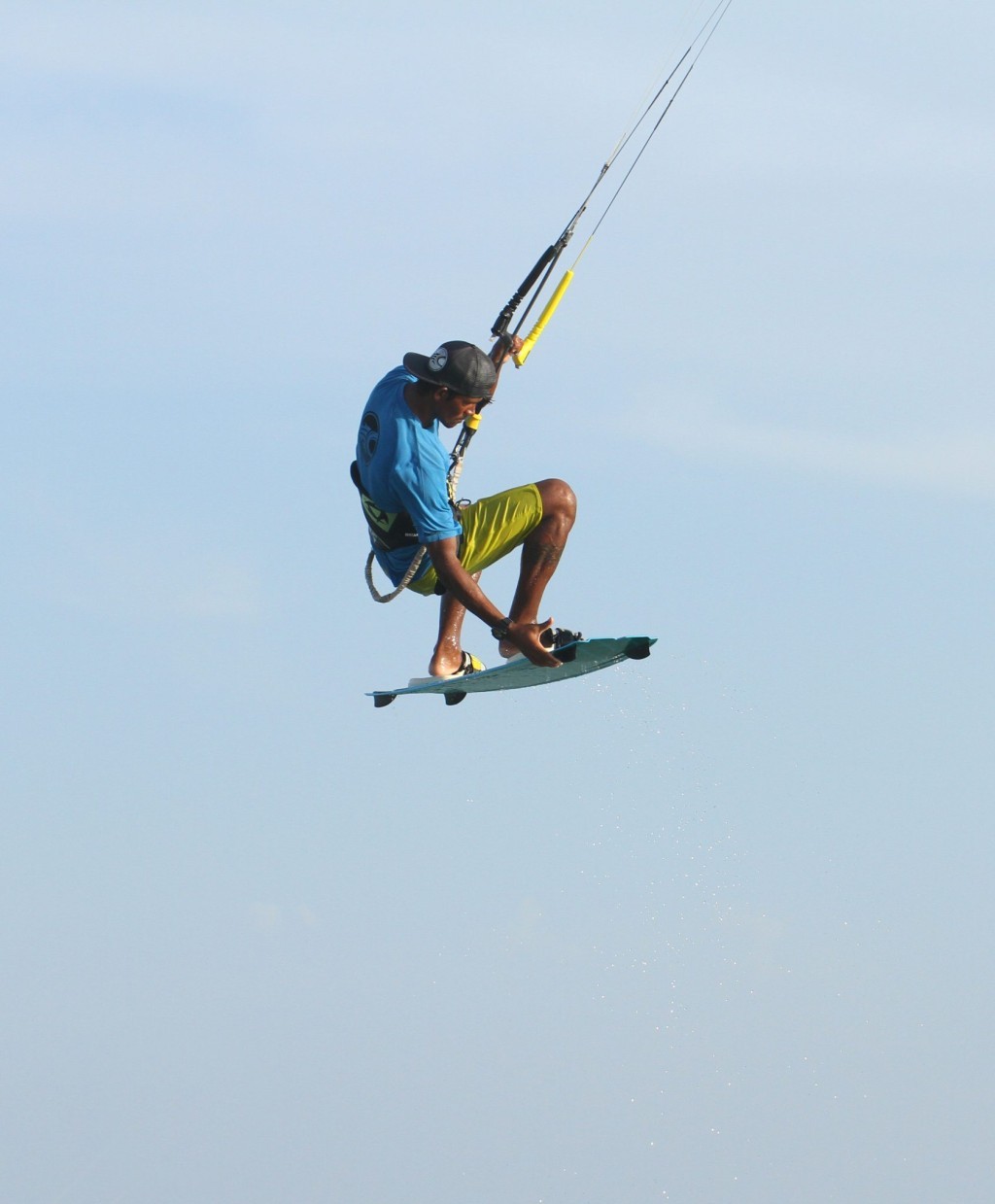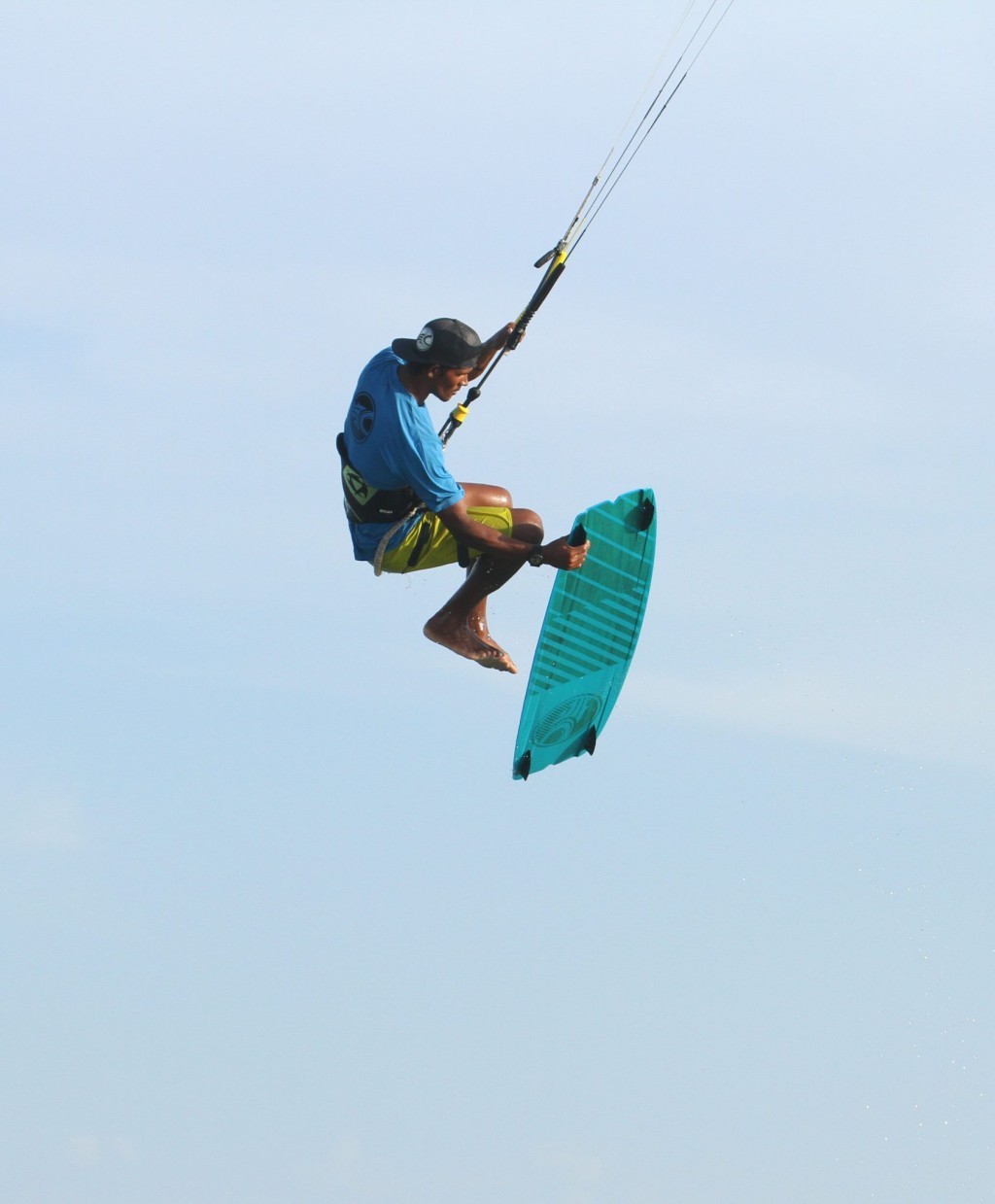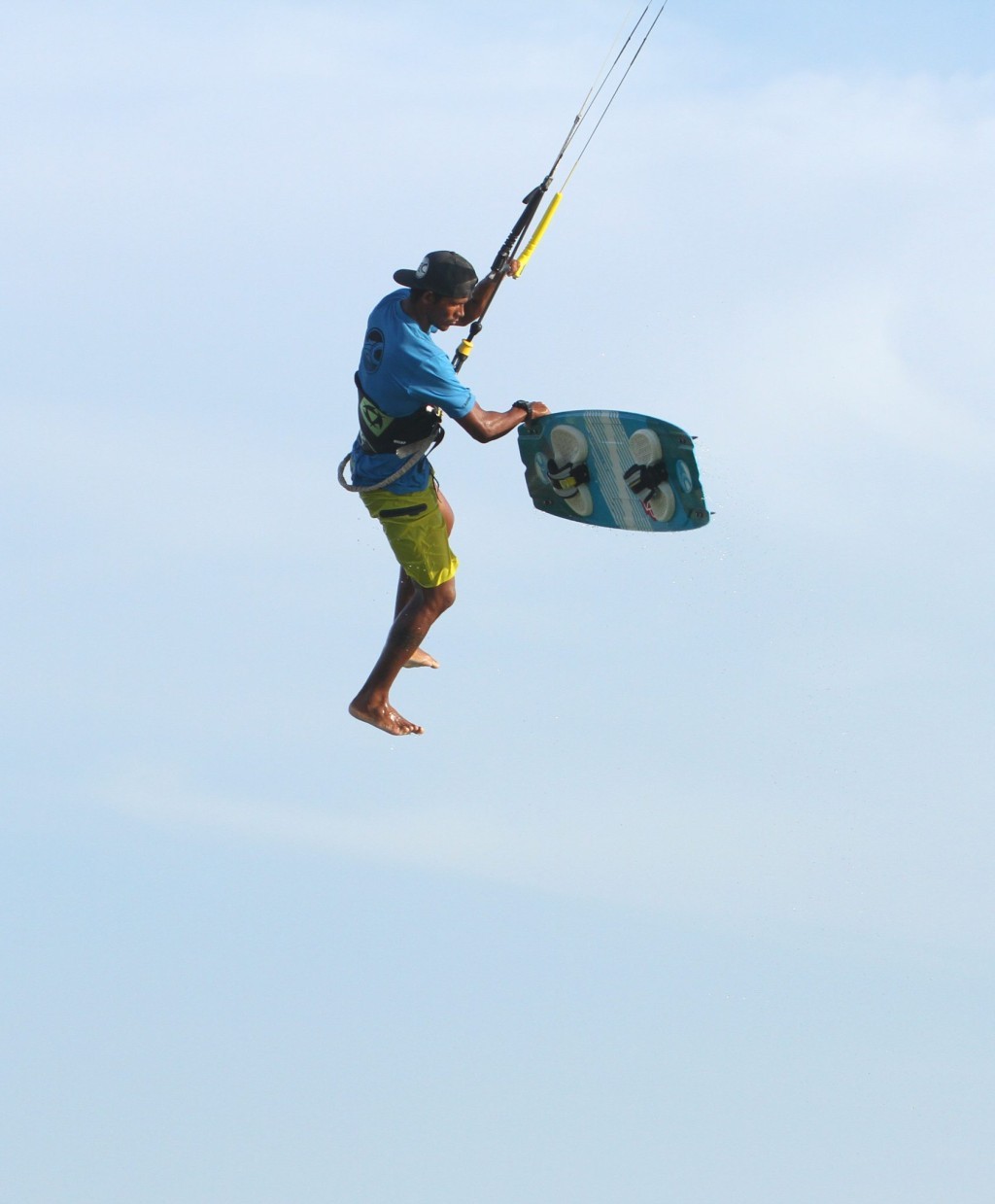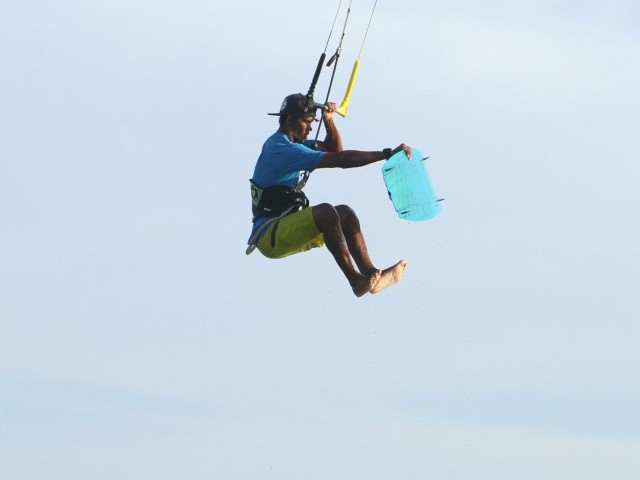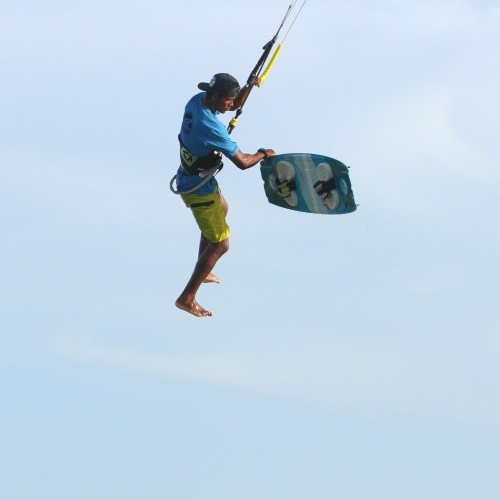
Board Off Varial
Technique / Intermediate
Introduction
Here’s a blast from the royal competition past. Four line kites were the latest thing; Martin Vari wasn’t throwing down any handle passes in a heat, Shinny was winning both world titles with a customary beer and ciggie and even Dre, the godfather of all things wakestyle had straps and was throwing the board about with gay abandon. The point is this was a show stopper and still looks the business. Kevin does them somewhere between earth and the ISS, and they’re suddenly all the rage again, just look at Nick AND even Aaron!!!
Whether you like to use a handle or prefer the edge of the board, it’s entirely up to you. What is guaranteed though is plenty of fun? And we’ll even go out on a limb and say that no previous board off experience is required, although it will of course help. So what is it, how did they and how will you do it?
A board off varial means that you’ll take the board off with a tail grab and then spin the board 360° before sticking it back on your feet. Before breaking this down into its relevant parts, let us ponder for the moment what type of jump you’re after. Sure we can all agree that some height will look good, but at the same time if you want the confidence to start twirling your board like some cheerleader twirls a baton, then you don’t want to be flying downwind at Mach 10 with your kite swinging precariously behind you. Unless of course, you’re one of the last three names in the intro. As such you’re after a high but controlled jump, something slightly more bow, while slightly less wang style.
Elevate Pic A.
Seeing as you’re after this type of elevator jump, it is paramount that you’re fairly powered. If you don’t have enough power, you’ll be forced into sending the kite with gusto, and therefore it’ll be swinging you around like a wrecking ball. Having your sweet spot trimmed comfortably out will also help. And finally, a good solid edge heading in a straight line will keep you balanced rather than a sudden carve into the wind on take off which will both unbalance and extend you. Your aim is to come in with the kite below 1 or 11 o’clock so that you can give it a good but short send, aiming for it to go no further back than 30 minutes each side of 12. With the sweet spot trimmed out you can then use the bar for a bit of extra lift. Looking at the picture you can see that Heliarde’s board is raked right over onto its edge. He’s got weight on both legs to get as much board from nose to tail into the water for maximum resistance, hands centred on the bar. He’s broken at the waist so he can keep the bar on the sweet spot and not stall the kite and he’s given the bar a good short, sharp send, but has already pretty much levelled the bar even though he hasn’t yet left the water. This will see him elevate nicely up into the skies, while not being pulled and extended over his board.
Knees Up Mother Brown Pic B.
To overly simplify a board off, one could say that getting the board off early, really, really helps you get it back on, as it gives you so much more time. Hence the elevator jump. If you’re not getting launched into orbit, you’ll find it much easier to lift your knees up quickly after take off, rather than ripping your abs as you find yourself smack bang in the middle of a fight between lift and gravity. Another plus point is that with the kite only just past 12 o’clock you won’t feel the need to get everything balanced first and can, therefore, go straight into board off mode. To achieve some form of control over your board spin, you’re aiming to grab the tail of the board, and if you can get a handful of the fin, it’ll be even better. You can see in the photo that Heliarde has brought his knees right up, just as you would for a tail grab and while holding the bar in and level he’s looking for the grab. Also worth noting that he’s dropped his rear shoulder behind the bar, leaning back to give himself more space and he’s kept the board flat, bottom down.
The Board Off Pic C.
Once you’ve got the grab getting the board off shouldn’t be too much of an issue! Having your straps a tad looser than normal will help a lot and is almost essential for getting it back on. Because you’ve lent back and all your weight is in the harness, and your board is flat, you should be able to just lift the board up with your hand while pulling your feet back. However, concentrate on keeping the bar in or else the kite will stop supporting you, and you’ll already start your decent. All through this, you should ideally still be on the way up. Here Heliarde has his feet pulled back, bar is level, and the board is officially freed.
The Varial Pic D.
We might have been exaggerating with the baton twirling comparison. For good reason though, as considering that the wind will be blowing and you are moving, the practicality of actually tossing your board a full rotation may be somewhat optimistic. What you will, in fact, be doing is flipping it. Think more of ironing your shirt or hitting a top spin shot. Best bet here is to look at Pic D. and see what Heliarde is up to. He’s actually brought his hand up, over and across in front of him while still holding the tail. That’s half a spin sorted. Only once he’s got the tail across does he release the board. This means that he’s got control of the board and can keep it closer, with less chance of the wind catching it and blowing it off. Somehow the cap always stays put…
Catch ASAP Pic E.
This is a no-nonsense moment. As soon as you release the board you want to catch it pronto! The easiest way is to aim for the middle of the toeside rail, as this will make putting the board back on a bit less of an effort. It’s interesting to look at the pic because even though Heliarde ironed the shirt and released the board late it still “floats” behind him. When you let go the board will slow and you won’t, so be as quick as you can.
On Like Donkey Kong Pic F.
Getting the board back on requires a certain amount of flexibility, but there are a few things you can do to make it doable. The most important thing that is often forgotten is flying the kite. It’s amazing how much simpler it is to get the board back on if you have time and are not rushing, no different to your socks. If you keep the kite flying above you with the bar in you’ll be floating down, not dropping. And if you’re already near the water, starting your dive will bring the kite up and over 12 o’clock which will actually give you more time. Here Heliarde has oodles of time, but you can see how much room he makes for himself. He is holding the board as far in front of him as possible on an outstretched arm. All he has to do is bring his knees up, aim his feet at the straps and then release the board onto them. If you lift your hand and push your thumb against the deck of the board, it’ll make up for a few decades of not stretching. Once the board is on, lower your undercarriage as you dive the kite.
Top Tips
If you’ve never tried a board off before then working on getting your knees up and grabbing as quickly as possible is a skill that will help no end.
Some kiters also find it easier to control the kite with their front hand centred on the bar, with the centre line between the first two fingers. However, it can feel very unnatural to send the kite like this, so it’s something else you can practice. Alternatively, you can change your front hand position on the way up.
If all goes wrong in the air try and drop the board below and behind you so that you don’t land on it and it doesn’t land on you.
Now have a look at the videos and sequence for some real-life inspiration.
Common Problems
If you can’t get the board off the chances are that the board is underneath and behind you, so make sure to lift your legs and lean back away from the bar.
If you have trouble controlling the board once you have taken it off. This likely means that you’re travelling too quickly through the air, so concentrate on your elevator take off.
If you’re dropping and running out of time, remember to trim out, keep the bar in and be prepared to redirect and dive for landing even if your feet aren’t in the straps.
Keystones
- Loosen straps
- Elevator take off
- Knees up quick for board off
- Flick board across and re-grab centre sharpish
- Dive for landing even if feet aren’t yet in
This technique article was in Issue 67 of IKSURFMAG.
Related
By Christian and Karine
Christian and Karine have been working together as a coaching team, running improver to advanced kitesurfing clinics since 2003.







